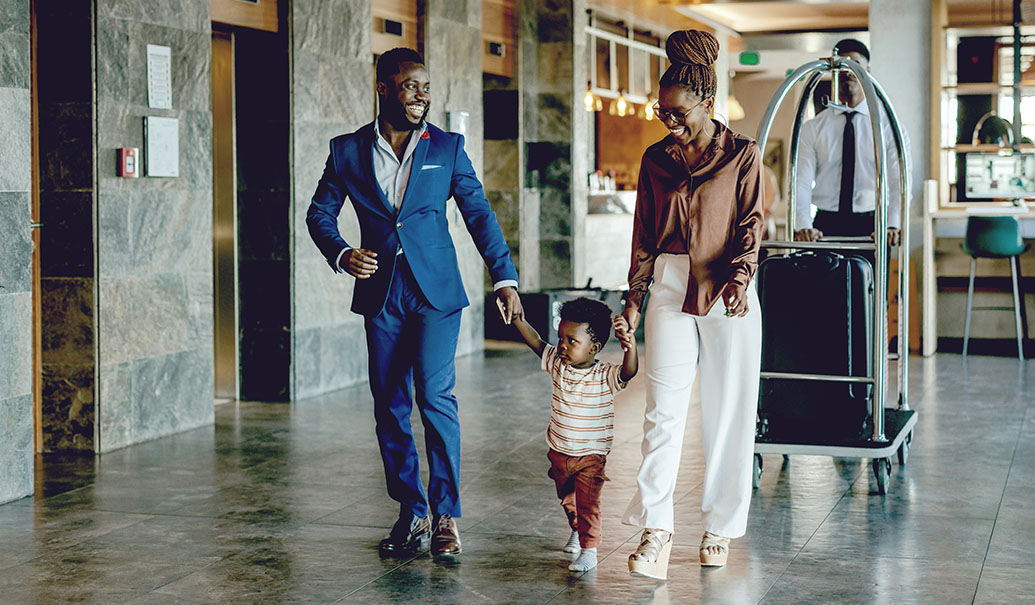Like many of you, I suspect, I didn’t have the energy to make resolutions for this year. After all, I was forced into enough changes in 2020 that I’m still adapting to, personally and professionally. It felt right not to put any additional pressure on myself to read more, exercise more, be more organized or drink less. After all, it’s going to be challenging enough to mentally prepare to put on shoes (and, let’s be honest, real pants) when we head back to the office or on the road later this year.
So, in 2021, rather than resolutions, I suggest we just take some good advice based on what we learned in 2020. The way I see it, there are three realities about 2021:
1. The new normal is not here yet, and neither is the recovery. Last year, I wrote about the three phases of the pandemic: crisis, business unusual and the new normal. Despite positive news about vaccine approvals, we’re still dealing with high infection rates, and an even more infectious mutation, resulting in new travel restrictions and shutdowns. Consumer confidence keeps taking hits. Things haven’t stabilized enough to call it a recovery yet, which means that we can expect continued volatility in travel patterns and travel purpose, probably through Q2 at least. This is not so great news. The better news is that, at this point, you’re used to dealing with “business unusual.” You’ll just have to keep doing that for a few more months. Prepare yourself mentally for this now by taking these steps:
- Continue relying more on forward-looking signals like booking pace, travel restrictions and consumer confidence than on historical patterns like last year’s occupancy or special event performance. Typical demand generators like concerts, conventions, holidays or festivals will return slowly, so be cautious about relying on those prior patterns until you know for sure they’ll be there.
- Adapt for changes in consumer travel behavior, which will remain unstable and abnormal for a while. Your traditional segments are not valid, your traditional stay patterns have changed and your traditional mix of business hasn’t returned (yet). Focus on figuring out who’s traveling, why they’re traveling and what their unique needs are to plan your next moves.
- Continue doing more with less. Given continued volatility, even as things start to stabilize, hospitality companies will be very conservative in hiring and budgeting. Do what you can to automate routine tasks, reduce non-value-add work and keep your team focused on mission-critical activities. Don’t be so focused on today that you lose sight of the larger horizon. You don’t want to miss the first signs of the recovery because you’re still in crisis management mode.
- Continue to evaluate both forward-looking and recent historical data patterns for signs of stabilizing, or any return to pre-pandemic patterns.
- Don’t overreact. This is where patience comes in. Recovery timing and patterns are likely to vary greatly by region. Don’t boomerang rates, raising them dramatically at the first spark of demand, and tanking them when it doesn’t materialize. Slow, steady and deliberate will win the race to recovery.
- Stay creative. You won’t go back to your pre-pandemic business mix overnight, or maybe ever. Segments will return at different paces, and consumer behavior will change. Continue to keep an eye out for opportunities to drive revenue in new ways, to use spaces differently, and to meet the needs of the “new” travelers.
- Reevaluate your digital roadmap. Just because face-to-face interaction is safe again doesn’t mean that you should stop thinking digitally. When contactless service and digital relationships became burning priorities through the pandemic, priorities shifted (or were completely replaced) on your longer-term digital roadmap. Take the time to reevaluate that roadmap, reprioritize initiatives that may have been set aside and determine how new capabilities impact the overall customer journey.
- As you emerge from the recovery and continue your digital transformation, don’t just return to your old organizational structure, roles and responsibilities. Pandemic-related furloughs and layoffs forced commercial teams to consolidate responsibilities and change reporting structures, and a lot of the pandemic ways of working, well, worked! Carefully evaluate how you want to operate moving forward and be purposeful about how you define roles and responsibilities.
So, keep doing what you’re doing for the next couple of months. Be patient and disciplined when anticipating the recovery. Don’t jump the gun at the slightest signal of returning demand, but don’t get so focused on today that you miss the signs. Above all, keep the good momentum going: Continue to rethink every process, business practice and decision, be creative and focus on your digital transformation.
2021 will be a better year than 2020, but there are still some challenges ahead. Patience and persistence, and a sprinkling of creativity, will get us through.
Add insights to your inbox
We’ll send you content you’ll want to read – and put to use.
Add insights to your inbox
We’ll send you content you’ll want to read – and put to use.

















